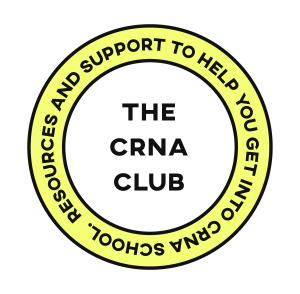The dream of becoming a Certified Registered Nurse Anesthetist (CRNA) is exciting, but getting into CRNA school is highly competitive. With more qualified nurses applying every year, having a strong and strategic application is essential to standing out. If you're wondering how to get into CRNA school, you need to focus on these four critical areas that admissions committees evaluate.
1. Demonstrate Academic Strength: A Foundation for CRNA School Success
Your academic record is the foundation upon which your application is built. CRNA programs are academically demanding, so your ability to thrive in a science-heavy curriculum is a key factor in admissions decisions.
Tips for Academic Success:
- Solid GPA: Aim for an overall GPA of 3.5 or higher. If your GPA falls short, consider retaking core science courses such as anatomy, physiology, or pharmacology where you received lower grades (B or below).
- Graduate-Level Coursework: Enrolling in graduate-level science courses (like advanced pathophysiology or pharmacology) can demonstrate your ability to handle the academic rigor of nurse anesthesia school.
- Standardized Tests: If your chosen program requires the GRE, invest time in preparation. Take practice exams, create a study plan, and target a competitive score to enhance your application.
A strong academic foundation signals that you are prepared for the rigors of CRNA school requirements and can handle the science-intensive nature of the program.
2. Highlight Your Relevant Clinical Experience: Meeting CRNA Program Requirements
Clinical experience is a major criterion for CRNA school admissions. The Council on Accreditation of Nurse Anesthesia Educational Programs (COA) requires applicants to have relevant critical care experience before applying.
How to Stand Out with Clinical Experience:
- High-Acuity Focus: Experience in Adult ICU, NICU, or PICU settings is highly valued because these units expose you to critically ill patients, which CRNA programs seek.
- Showcase Skills: Highlight your ability to manage complex patients requiring interventions such as ventilation, multiple vasopressors, CRRT (continuous renal replacement therapy), or ECMO (extracorporeal membrane oxygenation).
- Non-Traditional ICU Settings: If your experience comes from a unit with a different name (e.g., PACU), ensure it mirrors an ICU in complexity and reach out to specific programs to verify if your experience qualifies.
While most programs require at least 1-2 years of critical care experience, successful applicants often exceed this minimum, gaining several years of high-acuity experience to strengthen their applications.
3. Showcase Professional Development: Go Beyond Bedside Care
CRNA programs want to see that you’re a well-rounded candidate who goes beyond just bedside nursing. Demonstrating your leadership, involvement in professional organizations, and commitment to advancing the field can make your application stand out.
Ways to Enhance Your Professional Development:
- Leadership Roles: Take on leadership positions within your unit or hospital, whether through project management, research activities, or educational initiatives.
- Professional Involvement: Participate in nursing organizations like the AACN or pursue specialty certifications like the CCRN to show your commitment to ongoing professional development.
- Presentations & Publications: Present at conferences or co-author research articles in nursing journals. While not mandatory, these activities showcase your critical thinking, research skills, and dedication to advancing healthcare.
CRNA programs value candidates who are engaged, forward-thinking, and committed to growing professionally.
4. Gain Exposure to the CRNA Profession: Build Anesthesia Experience
Admissions committees want to see that you’re genuinely passionate about becoming a CRNA and have taken steps to learn about the profession. Gaining direct exposure to the field is crucial.
Ways to Gain CRNA Exposure:
- Shadow a CRNA: Shadowing a CRNA gives you firsthand insight into the role and responsibilities of nurse anesthetists. This experience is invaluable for your personal statement and interviews.
- Attend AANA Meetings: Participate in state or national AANA (American Association of Nurse Anesthetists) meetings to network with current CRNAs, program faculty, and other applicants.
- Stay Current with CRNA Issues: AANA meetings also cover critical issues and advocacy efforts in the field. Demonstrating your awareness of these topics shows your dedication to the profession.
Gaining exposure to the CRNA role helps solidify your passion for anesthesia and shows admissions committees that you’re fully committed to this career path.
Conclusion: Focus on These 4 Areas to Stand Out as a CRNA Applicant
The journey to becoming a CRNA starts long before you submit your application. By focusing on these four key areas—academic excellence, clinical experience, professional development, and anesthesia exposure—you can present a well-rounded, competitive application that stands out to admissions committees.
Ready to take the next step in your CRNA journey?
Download our free guide on "How to Become a Competitive CRNA School Applicant" for more in-depth tips and insights. Don’t forget to sign up for our 30-Minute Masterclass—one of our most popular resources—to learn exactly what it takes to get into nurse anesthesia school!


